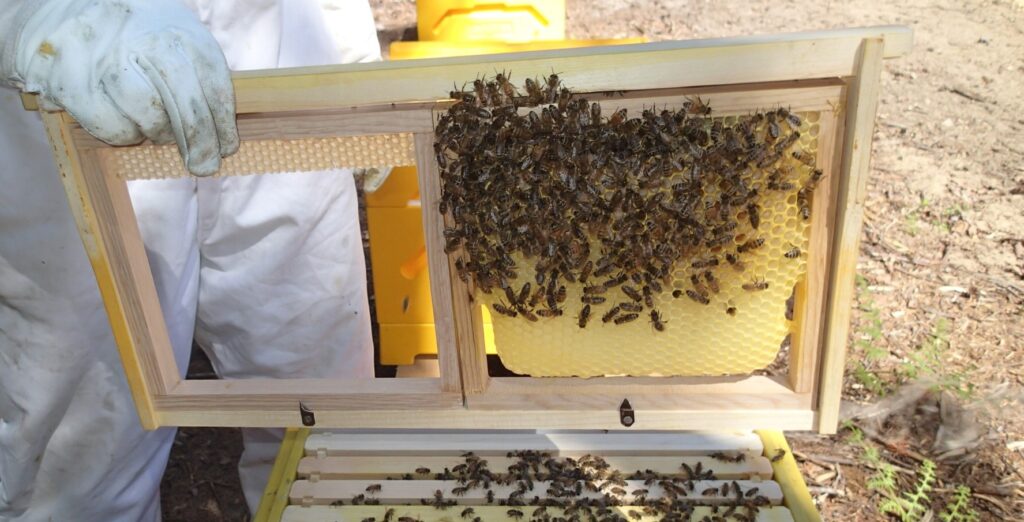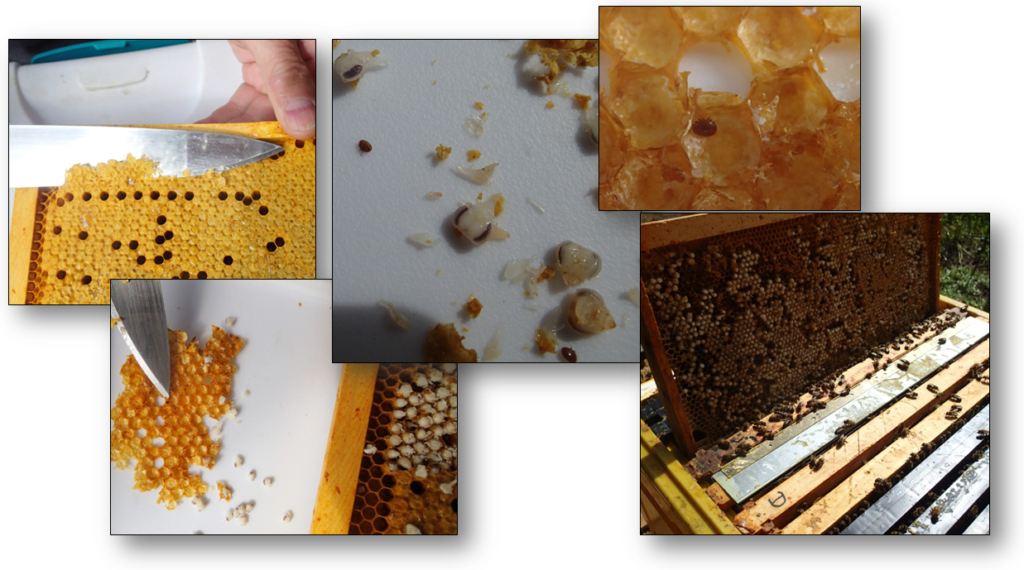Drone brood cells that are about to be capped are magnets for Varroa mites. Research from the University of Wageningen (The Netherlands) has shown that the Varroa mites are up to 12 times more likely to enter drone cells versus worker cells. Feral honey bee colonies have about 17% of drone combs versus worker bee combs, while managed colonies, where drone combs are removed regularly have about 4% of drone combs.

Insert a frame of drone comb into a colony at the edge of the brood nest, allow the queen to fill it with drone eggs, wait until the cells are capped, then remove the frame before the mites emerge. The Split Drone Frame (containing 2 half frames) allows the continued swapping (weekly) of capped drone brood without introducing (and removing) more drone cells than necessary (1 full frame for 2 supers equals 5%). The capped half frame is frozen for at least 2 days and uncapped before inserting it again into the Split Drone Frame. The worker bees will clean out the cells and in many cases recycle the protein.
The split drone frame for the Drone Brood Removal Method (1) can be self-made from standard wood molding available in building supply stores. The complete worksheet in PDF format is available here.
This method should be applied routinely during the breeding season and is, therefore, considered rather a best management practice than a Varroa control method based on integrated pest management thresholds.

The practical experience is that the Drone Brood Removal Method can reduce the development of the Varroa mite population below the treatment threshold until later in the summer, when additional Varroa control methods can be applied.

Frozen combs can be relatively easy uncapped with a serrated kitchen knife. Letting the combs thaw for 10 to 15 minutes will allow cutting the unfrozen cappings along the cell content which is still frozen.
Dead mites can be seen on the inside of the cappings. Strong hives will clean out the cells within 1 to 2 days and it is possible that all or some of the protein is recycled by the bees.
The CVBC flyer in PFD format for the Drone Brood Removal Method (1) can be downloaded here.